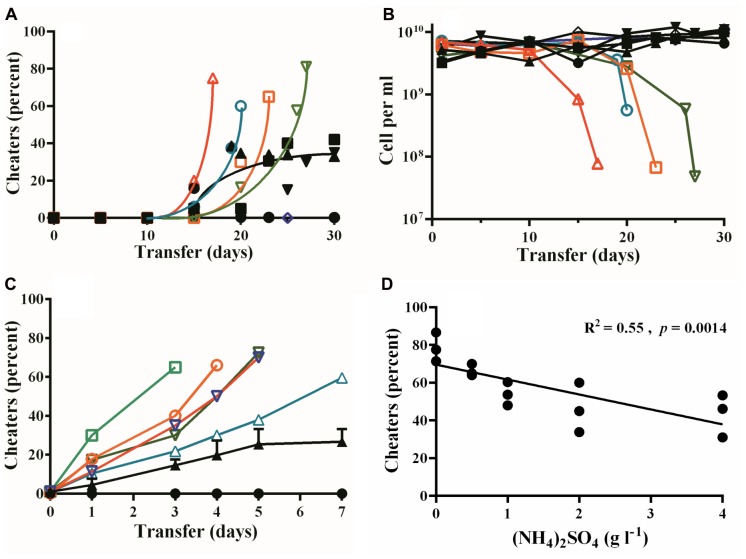FIGURE 1.
Emergence of LasR-mutant cheaters and their fitness in PM-casein with or without ammonium sulfate added. (A) Percent of protease-negative cheaters in PM-casein media over time. In four of five individual experiments without added ammonium sulfate, cheaters emerged and increased (hollow symbols). In PM-casein with ammonium sulfate (black symbols), cheaters reached a frequency of 27 ± 7%. In one experiment with and one experiment without ammonium sulfate, cheaters did not emerge. (B) Cell densities in casein experiments. In the cases where the culture could not be propagated, the final cell densities fell by 90–99% (hollow symbols). Experiments in PM-casein with ammonium sulfate (black symbols) are shown for comparison. (C) LasR-mutant frequency after 7 days of passage. LasR-mutant cheater frequency in PM-casein without ammonium sulfate was rapid in all five replicates from an initial frequency of 1% (hollow symbols). An equilibrium was always established (black triangles) in media with ammonium sulfate added. When LasR mutants were not present at the beginning of the experiment, they did not emerge in 7 days PM-casein with ammonium sulfate (black circles). (D) Outcomes of w.t. – LasR-mutant competitions with increasing ammonium sulfate concentrations. w.t. PAO1 and LasR-mutant cheaters were mixed at a 1:1 ratio and the frequency of each was enumerated after 24 h. Experiments were performed in triplicate. For the data in panel D, a linear regression analysis was performed.

